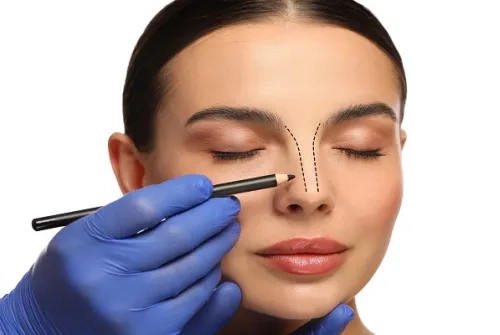Alo Yeditepe
Alo Yeditepe
Nose Aesthetic Surgery - What You Need to Know
In our country, rhinoplasty is among the most commonly performed aesthetic surgeries. Both men and women opt for this operation to address issues such as deviation and size during the procedure. Frequently, both corrections can be made simultaneously. Dr. Öğr. Ü. Mert Ersan, a Specialist in Plastic, Reconstructive, and Aesthetic Surgery, answered frequently asked questions about rhinoplasty, commonly known as nose aesthetic surgery..
Does Difficulty in Breathing Occur After Rhinoplasty?
In rhinoplasty surgery, aesthetics and function are intertwined. In other words, for an organ to be called "beautiful" after aesthetic improvement, it needs to function well. Therefore, a nose that can breathe beautifully is considered attractive.
Hence, before rhinoplasty surgery, through both physical examination and imaging techniques, issues that may hinder breathing, such as septal deviation, turbinate hypertrophy, internal nasal valve insufficiency, and external nasal valve insufficiency, are identified. Existing problems can be corrected during the same session as the surgery. Thus, with the advancements in technology and experience, it is possible to achieve not only an improvement in aesthetics but also enhanced breathing after aesthetic nose surgery without compromising breathing function..
Are Nose Surgeries Performed Using the Closed Method?
There are minimal differences between performing the surgery in a closed or open manner. Ultimately, both are conducted through the inside of the nose. However, the approach is generally tailored to the condition of the patients. In some noses, especially those with significant deviations or previous surgeries, the closed approach may not be as beneficial. In such cases, open rhinoplasty may be preferred. Additionally, for individuals who haven't undergone previous surgery and do not have a significant nasal deviation, closed rhinoplasty is chosen for its advantages..
Can Everyone Achieve the Nose They Desire? What Should Be the Approach in This Matter?
Especially with the beauty standards created by social media, individuals' preferences can vary. However, it's crucial to understand that not every nose is suitable for everyone. Maintaining a strong doctor-patient relationship from the beginning is essential for the patient to be satisfied with the results. During the preoperative planning, three-dimensional images are created with the help of technology to meet the patient halfway.
Since each individual's cartilage structure, bone structure, skin type, and healing tissue are different, not every nose is suitable for everyone. Sharing all possibilities and impossibilities with the patient and reaching a common understanding are crucial for postoperative patient satisfaction. It should not be forgotten that rhinoplasty can create significant changes in a person's face.
Is It Possible to See an Estimated Result Before the Surgery and After the Surgery?
Programs that help obtain an idea about the postoperative appearance of the nose are used, although not definitive. Planning with two or three-dimensional programs allows the patient to have a preoperative understanding, and it guides the surgeon during the operation. However, it's important to remember that everyone has different cartilage, skin, and bone structures. Therefore, these images provide only an idea and do not guarantee definite results after the surgery.
Does Bruising or Swelling Occur After Aesthetic Nose Surgery?
One of the most common concerns for patients after aesthetic nose surgery is whether there will be pain or swelling. Although rhinoplasty is not typically associated with severe pain, patients may experience discomfort that can be managed with pain relievers. However, patients often express that the possible discomfort is not bothersome. Considering it's a surgical procedure, some minor throbbing sensations are expected, but they are usually well-managed with pain relievers and don't cause significant discomfort.
Bruising is an expected outcome after the surgery. However, the amount of bruising is not considered a measure of the success or failure of the operation. Having more bruising does not necessarily mean the surgery went poorly, and the absence of bruising doesn't imply a flawless operation. Bruising tends to decrease as the first week progresses. Women, in particular, can return to social activities a bit earlier by using concealers. Some patients may choose to return to work shortly after the removal of the packing, while others may prefer to take a week off for rest, even if they don't feel significant discomfort..
What Should Patients Pay Attention to After Nose Surgery?
After rhinoplasty, the nose continues to heal. It may be possible to return to social activities within the first week to ten days. However, it is necessary to avoid serious physical activities in the first month.
For the bones in the operated area to return to their previous state, a period of about six months is required. Therefore, the first six months after aesthetic nose surgery are particularly critical. During this period, it is important to adjust the patient's life, such as not wearing glasses and protecting the nose from traumas. Listening carefully to the doctor's warnings and following them is crucial to achieving the desired outcome..
About
Faculty and Year of Graduation:
Hacettepe Medical Faculty (English), 2014
Alo Yeditepe




